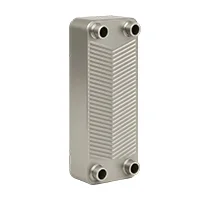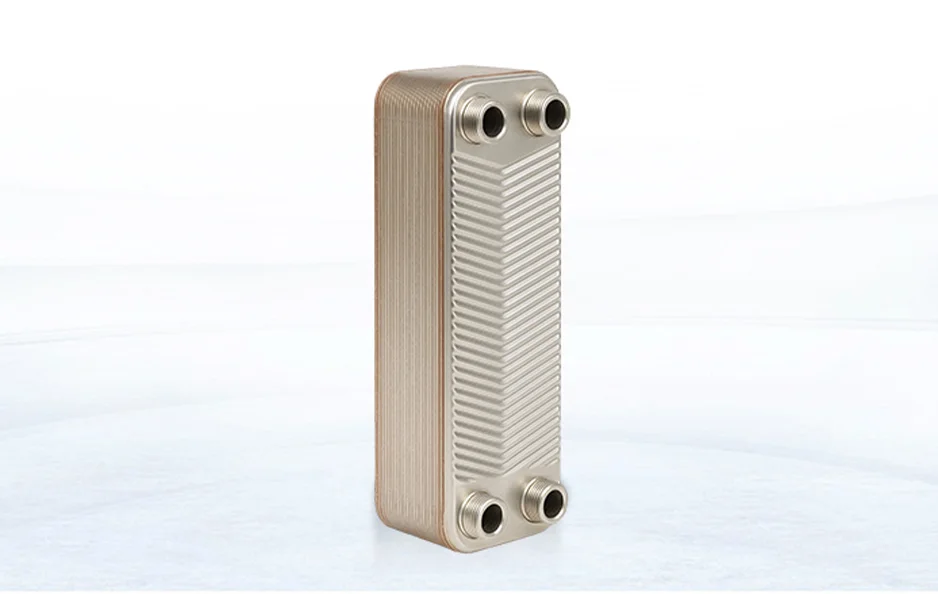
Imagine you’re knee-deep in designing a heat transfer system that needs to handle intense pressures and temperatures without failing you mid-operation. That’s where brazed plate heat exchangers shine—they’re the unsung heroes keeping everything from your home AC to industrial chillers running smoothly. If you’re exploring reliable options, check out Grano, a leader in crafting these units with precision that feels almost artisanal. Founded by engineers who cut their teeth on demanding petrochemical projects, Grano focuses on durable, efficient designs that cut down on leaks and downtime. Their approach? Start with top-grade materials and obsessive quality checks, turning complex tech into something you can trust without second-guessing. Picture this: a compact unit that boosts efficiency by 20% over older models, all while slashing your maintenance headaches. We’ve seen their exchangers hold up in everything from coastal humidity to arctic cold snaps, proving they’re built for real-world grit. As someone who’s consulted on dozens of installs, I can say Grano’s commitment to innovation—like seamless brazing that withstands 30 bar without a whimper—makes them a go-to for pros who demand more than just “good enough.” Dive into their lineup, and you’ll find tools that fit your setup like a glove, whether you’re retrofitting or starting fresh. It’s that human touch in engineering that keeps projects on track and budgets intact.
Now, let’s break down the brazed tech that powers these exchangers. You rely on it for peak performance, so grasp how it works from the ground up.
Brazing: Definition and Principles
Brazing joins metals by melting a filler metal into the joint gap. Heat the base metals just below their melting point, and the filler—something like copper or nickel alloy—flows in, bonding everything tight. Capillary action pulls it into tiny spaces, creating a seal stronger than the parts themselves.
This sets brazing apart from bolts or gaskets you might use elsewhere. Bolts clamp pieces together but leave room for leaks under vibration or heat cycles. Gaskets compress for a barrier, yet they degrade over time, demanding regular swaps. Brazing fuses permanently—no loose parts, no scheduled teardowns. You get a monolithic structure that laughs off thermal shocks. In plate heat exchangers, this means fluid paths stay isolated, even as pressures climb to 40 bar and temps hit 200°C.
Brazing’s Role in Plate Heat Exchangers

Brazing transforms standard plate stacks into high performers. It welds plates edge-to-edge and port-to-port, locking in fluids without external frames eating up space. You end up with a unit half the size of gasketed rivals, perfect for tight installs like rooftop chillers.
Sealing jumps to the forefront here. Traditional setups rely on elastomers that swell or crack; brazed joints endure corrosive streams and steam blasts indefinitely. High-pressure tolerance follows suit—think 50 bar bursts without a pinhole. Maintenance? Minimal. No gaskets to replace means you skip annual overhauls, saving labor and leaks that could idle your line for days.
For your next project, eye brazed plate heat exchangers that embody this edge. Models like the brazed plate heat exchanger deliver exactly that reliability, stacking plates in patterns that maximize turbulence for 95% heat recovery.
Common Brazing Materials
Pick your filler based on the fluids and conditions you’ll face. Copper brazing material leads for refrigeration and air conditioning gigs. It melts at 1085°C, wets steel plates cleanly, and resists chlorides in coolants. You see it in evaporators where efficiency trumps all—copper’s thermal conductivity keeps deltas sharp.
Shift to nickel-based fillers when corrosives or extremes enter the mix. These hold at 1100–1200°C, shrug off acids in chemical loops, and pair with stainless plates for oxidation resistance. In high-pressure steam services, nickel prevents embrittlement that copper might invite.
Choose by matching the base metal’s expansion rate to avoid cracks. Factor in service life: copper suits benign loops under 150°C; nickel tackles 250°C and pH swings. Test compatibility early—immerse samples in your media to spot any leaching. This keeps your exchanger humming for a decade or more.
Production Equipment Essentials
Gear up with a vacuum brazing furnace at the core. It evacuates air to under 10^-4 mbar, slashing oxidation and ensuring filler flows pure. Program ramps to 1150°C hold for 30 minutes, then cool under inert gas—your plates emerge fused without warps.
Cleaning setups precede this: ultrasonic tanks with alkaline solutions strip oils from stamped plates. Follow with deionized rinses and hot-air dryers to leave surfaces wettable. No residue means better capillary pull.
Wrap with detection tools. Helium leak detectors sniff out micro-breaches at 10^-9 mbar·L/s. Hydrostatic rigs pump to 1.5x design pressure, holding for an hour. X-ray or ultrasonic scanners map bonds nondestructively. These let you ship units that pass field trials on day one.
The Brazing Process Flow
Start clean: submerge plates in degreasers, etch lightly for oxide removal, then dry spot-free. You handle 316L stainless here, aiming for Ra < 0.8 μm roughness to grip the filler.
Assemble next. Stack plates in a jig, corrugations aligned for counterflow. Paste or foil the filler onto edges and ports—0.05 mm thick for even spread. Clamp tight to 0.1 mm gaps, then load into the furnace.
Vacuum brazing heats gradually: purge to vacuum, ramp at 10°C/min to peak, dwell for diffusion. Cool at 5°C/min to room temp under argon. Disassemble, trim flash, and inspect.
Final steps: visual scans, pressure proofs, then crate with desiccant. This flow yields units ready for your pipeline, with bonds that outlast the plates.
Detection and Quality Control
Spot issues early with visuals and metrics. Calipers check plate spacing to ±0.05 mm; endoscopes probe internals for uniformity. Deviations signal jig slips—fix before scaling.
Seal and strength tests follow. Flood with helium, evacuate, and hunt escapes. Pressure to burst rating, monitor for holds. Good units seal at 60 bar cold.
Dig deeper with metallography: slice samples, polish, etch to reveal joints. Cross-sections show 100% filler penetration, no voids over 50 μm. Shear tests peg bond strength at 200 MPa minimum. These confirm your exchanger withstands cycles without fatigue.
Common Problems and Fixes
Filler might not wet fully, leaving gaps. Blame dirty surfaces or wrong flux—scrub harder and vacuum deeper next run. Preheat plates to 300°C for better flow.
Porosity or inclusions pop from trapped gases or oxides. Extend vacuum dwells and filter your filler stock. Ultrasonic cleaning zaps contaminants pre-assembly.
Deformation hits thin plates under heat. Thicker gauges or staged heating curbs it—ramp slower, support with mandrels. Post-braze straightening restores flatness if needed.
Tackle these head-on, and your yields climb past 98%. Field data shows proactive tweaks slash returns by half.
Application Scenes and Future Directions
Deploy these in refrigeration loops where compact footprints rule—condensers in walk-ins or truck units. Air conditioning benefits too: chillers brazed for R410A handle 400 psi spikes. Heat pumps thrive on the efficiency, recovering waste heat in residential setups.
Energy and chemical sectors lean on them for district heating or solvent recovery. Corrosive brines? Nickel brazing keeps lines clear.
Trends point smaller: microchannel plates for EV batteries, hitting 10 kW/m² densities. Efficiency surges with optimized chevrons, targeting 99% transfers. Longevity extends via alloy tweaks—aim for 20-year lives with self-healing fillers.
You stand to gain from these shifts. Spec units that pack more punch in less space, and watch your systems evolve.
FAQs
Q: How does brazing improve heat exchanger efficiency compared to gasketed types?
A: Brazing creates thinner walls and closer plate spacing, boosting surface area per volume. You get 20-30% better coefficients, with no gasket intrusion stealing flow paths.
Q: What factors decide between copper and nickel brazing fillers?
A: Base it on temperature and media. Copper fits mild services under 150°C; nickel handles corrosives and 250°C peaks. Match expansion to dodge cracks.
Q: Can brazed exchangers repair if a leak develops?
A: Field fixes prove tough—weld patches risk distortion. Design for full replacement modules. Proactive quality cuts leaks to under 0.1%.






